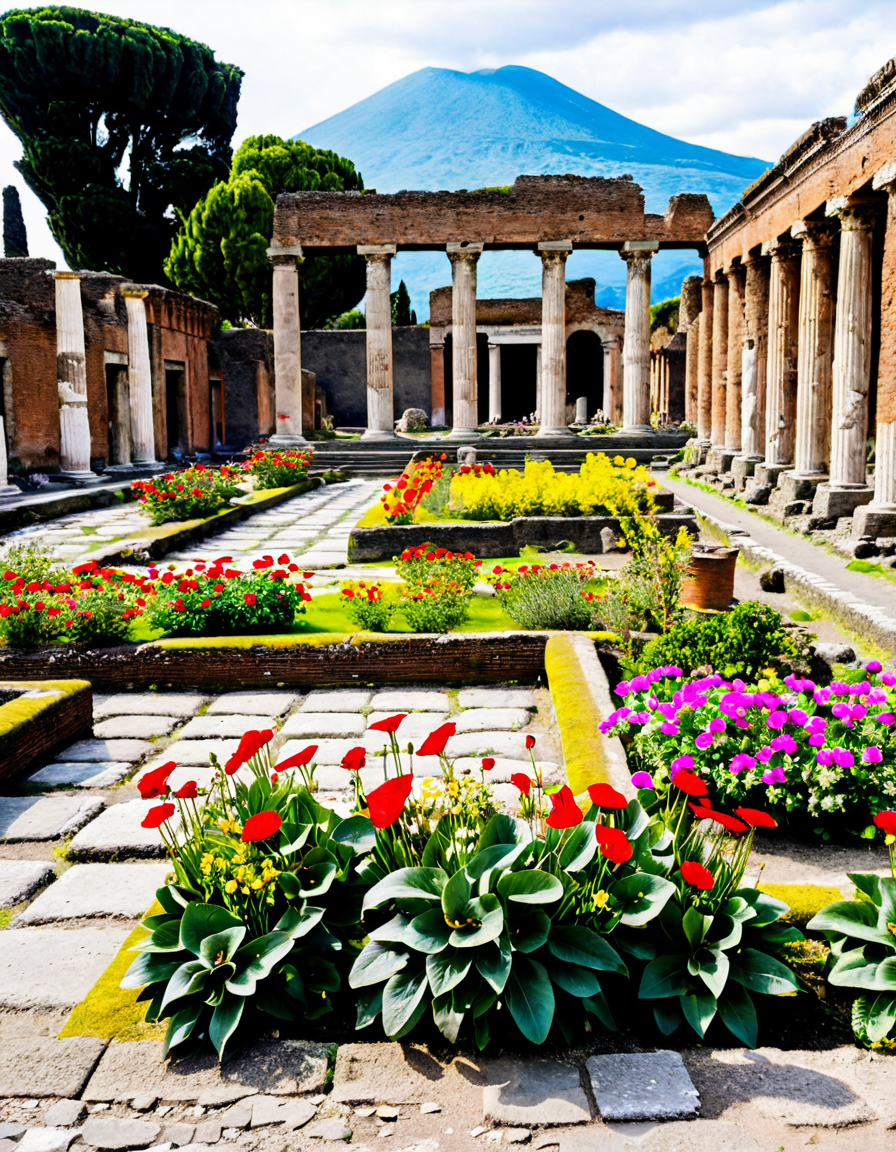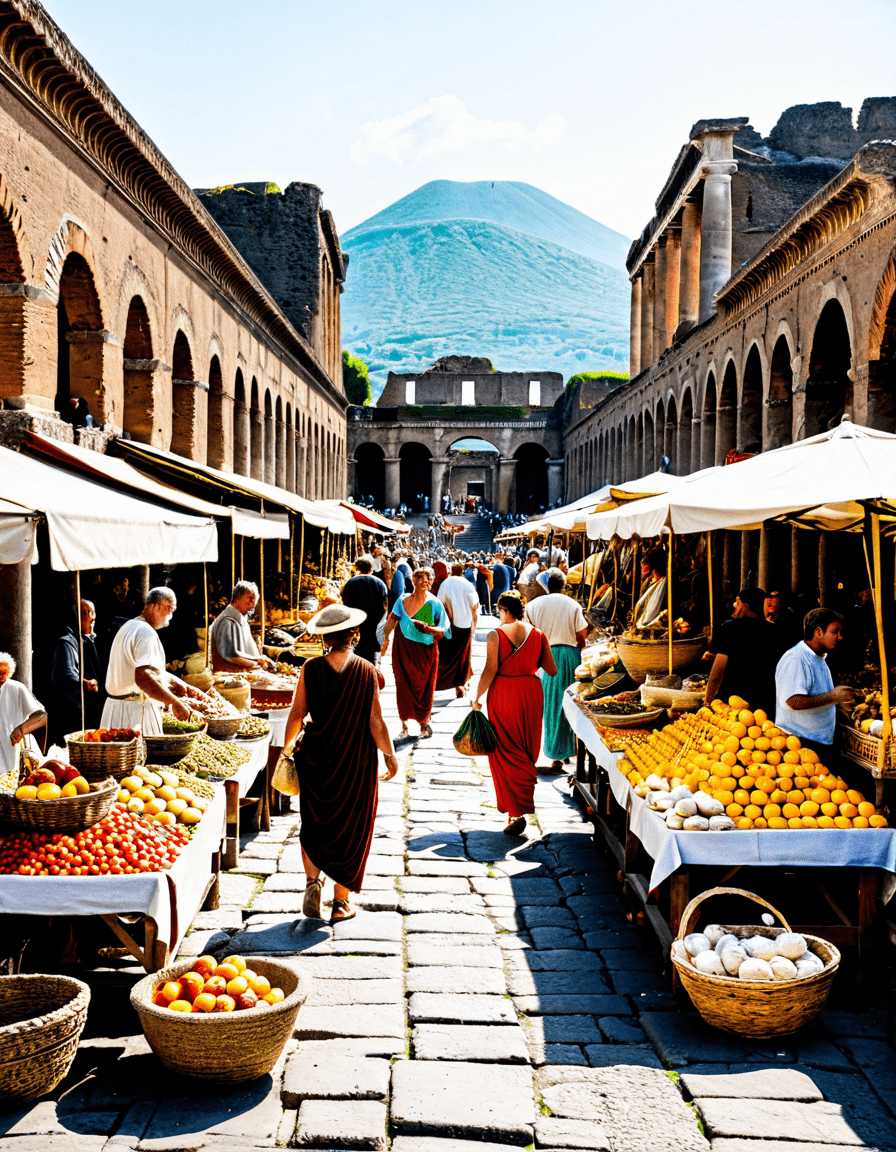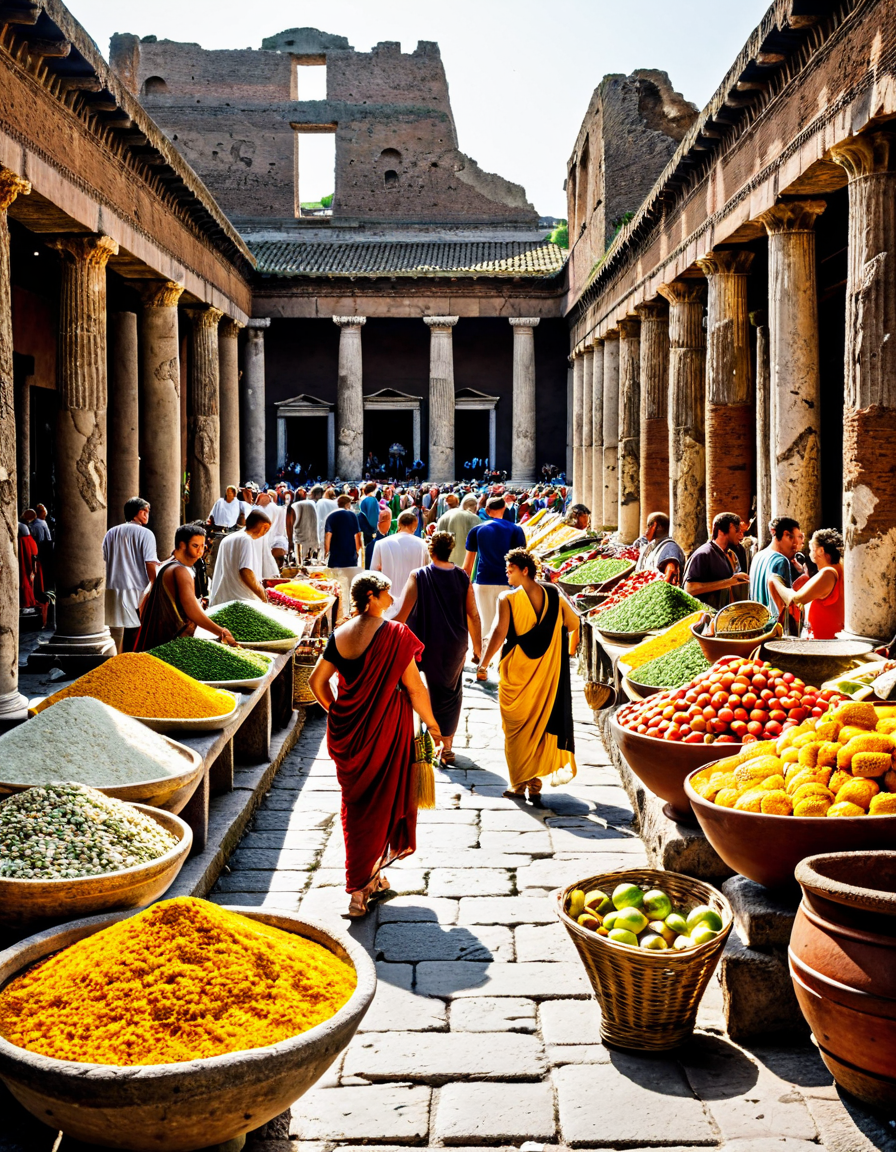Pompeii, a name that evokes images of catastrophic destruction and frozen in time moments, stands as a powerful reminder of nature’s might and humanity’s enduring spirit. Buried beneath volcanic ash and pumice after the eruption of Mount Vesuvius in 79 AD, Pompeii offers a treasure trove of historical knowledge, archaeological wonders, and profound cultural insights. As we delve into the extraordinary aspects of Pompeii, we also reflect on its impact on cinema, where stories of tragedy and resilience converge. Get ready to explore the captivating connection between Pompeii and our beloved movies!

Top 5 Extraordinary Aspects of Pompeii
1. Archaeological Preservation: A Time Capsule
What happens when a city gets engulfed by volcanic ash? Rather than being erased from memory, Pompeii turned into a time capsule! The eruption of Vesuvius preserved everything from homes to artifacts, giving us a crystal-clear look at Roman life. Imagine wandering through streets lined with vivid frescoes, each one revealing the daily routines and social structures of the time. Those iconic depictions offer a collision of everyday life and mythical tales, painting a stunning backdrop to the lives that were once lived there.
Moreover, archaeological experts even discovered well-preserved food items, like loaves of bread and fruits. Can you believe that? One look and you’d realize that the residents of Pompeii liked to eat well! These treasures highlight their culinary practices and social interactions, making Pompeii an essential chapter in the story of human civilization.
2. Urban Planning and Infrastructure
Next up, let’s marvel at the engineering genius behind Pompeii’s urban planning. The layout of the city is nothing short of remarkable! It featured a sophisticated network of roads, homes, and public buildings. The streets, surprisingly, had a creative touch. You see, raised stepping stones were built to help pedestrians cross without ruining their sandals during the rainy season—smart, right?
The public baths, a quintessential aspect of Roman life, exhibited advanced heating systems called hypocausts. These innovations didn’t just showcase architectural prowess; they also highlighted a cultural need for social activities and hygiene practices. It’s clear that the idea of communal spaces was significant back then. So, next time you unwind in a modern spa, think of Pompeii!
3. Socioeconomic Insights: A Microcosm of Roman Society
Pompeii also serves as a reset button for our understanding of ancient Roman economy and society. Analyzing the remnants reveals a vibrant city filled with bakeries, taverns, and even brothels. Talk about a bustling marketplace! These establishments provide crucial insights into the local economy and daily life, illustrating a community that thrived through trade and craftsmanship.
The presence of items like amphorae—from wine to oil—hints at Pompeii’s role as a commercial hub. Even advertisements and graffiti found on walls give us a peek into marketing gimmicks of the past. In a world before Instagram and TikTok, Pompeii’s citizens had their own ways of capturing attention!
4. Cultural Exchange and Influence
Did you know that Pompeii was like the original melting pot? The city was a vibrant blend of cultures—Roman, Greek, and Etruscan influences mingled in everyday life. This is evident in the artifacts discovered, which reflect a rich diversity of beliefs and practices. The numerous temples and cult sites dedicated to different deities serve as markers of this diverse spiritual landscape.
One of the most stunning finds includes the Villa of the Mysteries, adorned with vibrant frescoes that depict Dionysian rites, revealing how interconnected Pompeii was with broader Mediterranean culture. Cinema has a knack for portraying diverse societies. Just look at films like “Shang-Chi,” where cultural representation is celebrated. Pompeii had that diversity down long before Hollywood!
5. The Human Element: Stories of the Victims
One of the most heart-wrenching aspects of Pompeii remains the haunting plaster casts of the victims, revealing their final moments. Plaster was poured into voids left by fallen bodies, preserving the exact positions of those who faced the eruption. This technique captures chilling tales of families attempting to escape or individuals seeking refuge as chaos unfolded around them.
Each cast tells a story—those snapshots of humanity instill a sense of relatability and reinforce that Pompeii was home to real people with hopes, dreams, and loved ones. Beyond the archaeological data, it’s these poignant stories that invite us to connect deeply with the past. With every cast, we remember them as more than mere statistics; they were part of a flourishing community, tragically disrupted.

The Ongoing Legacy of Pompeii
Fast forward to the 21st century, and Pompeii remains a hot topic (pun intended!) not only for historians and archaeologists but also for artists and filmmakers. Its dramatic narrative inspired various adaptations, like the 2014 film “Pompeii,” which mixed historical catastrophe with a fictional romance. The fusion of tragedy and human resilience continues to captivate audiences, shaping how we view our own stories through cinema. With the expansion of streaming platforms, this dramatic history is more accessible than ever.
Recent advances in archaeology are exciting too! Techniques like ground-penetrating radar and drones are revealing hidden structures, offering fresh perspectives on urban layouts. Imagine exploring the secrets of Pompeii through a thrilling documentary—can’t wait for the next release! Innovations in excavation and preservation techniques ensure that Pompeii’s narratives remain lively, allowing upcoming generations to explore this ancient wonder.
In our increasingly connected world, the lessons of Pompeii resonate beyond its ruins. They remind us of the complexities of our relationship with nature—not just its unpredictability but its transformative power. Pompeii stands as a cultural beacon, urging us to reflect on our past while igniting our curiosity for what will come next.
As you binge-watch Halloween Ends on your favorite streaming service or catch up on celebrity gossip on Jimmy Kimmel live, remember the lessons learned from Pompeii. The stories of the city may be set in ancient times, but the interplay of life and loss continues to resonate today—and that’s something any cinephile can appreciate!
Pompeii: The Extraordinary City Buried by Volcanoes
Fascinating Facts About Pompeii
Did you know that Pompeii was home to a vibrant community filled with life and culture? Before it was buried under volcanic ash, it boasted theaters, baths, and even fast-food joints! That’s right, ancient Romans had their version of fast food, often serving up bread and wine at local counters. Just like modern-day culinary trends, these establishments catered to quick meals for busy citizens. Speaking of stunning cities, if you’re curious about unique architectural gems, you might find this My Skarsgard article intriguing.
Pompeii’s residents had a knack for art, too. Walls adorned with frescoes and intricate mosaics revealed everything from everyday life to mythology. In fact, one of the most famous mosaics found in Pompeii depicts the story of Achilles, akin to the captivating imagery in shang chi. After the eruption of Mount Vesuvius in 79 AD, these works were remarkably preserved under layers of ash, providing us an incredible window into Roman life. Isn’t it amazing how history can be frozen in time?
Now, let’s talk about one of the most surprisingly mundane yet fascinating details—Pompeii had its own version of street signs! Well, sort of. Ancient graffiti, often scratched into building walls, served as a form of expression and communication among locals, much like today’s casual banter and hashtags! Then again, if you’re into quirky characters, the sesame street Characters have their own unique charm too! Can you imagine how the relationships developed in Pompeii might resemble the kinds of friendships we see on that beloved show?
Last but not least, the discovery of Pompeii has inspired countless stories, art pieces, and even films. The site serves as a reminder of nature’s power and human fragility, echoing themes seen in movies today. For those yearning to delve deep into human experiences, you might enjoy exploring the narratives of figures like j d Vance who connect personal stories with historical contexts. So whether you’re drawn to vivid art, street culture, or the dramatic interplay of nature and humanity, there’s something for everyone in Pompeii—a city that truly left its mark!





